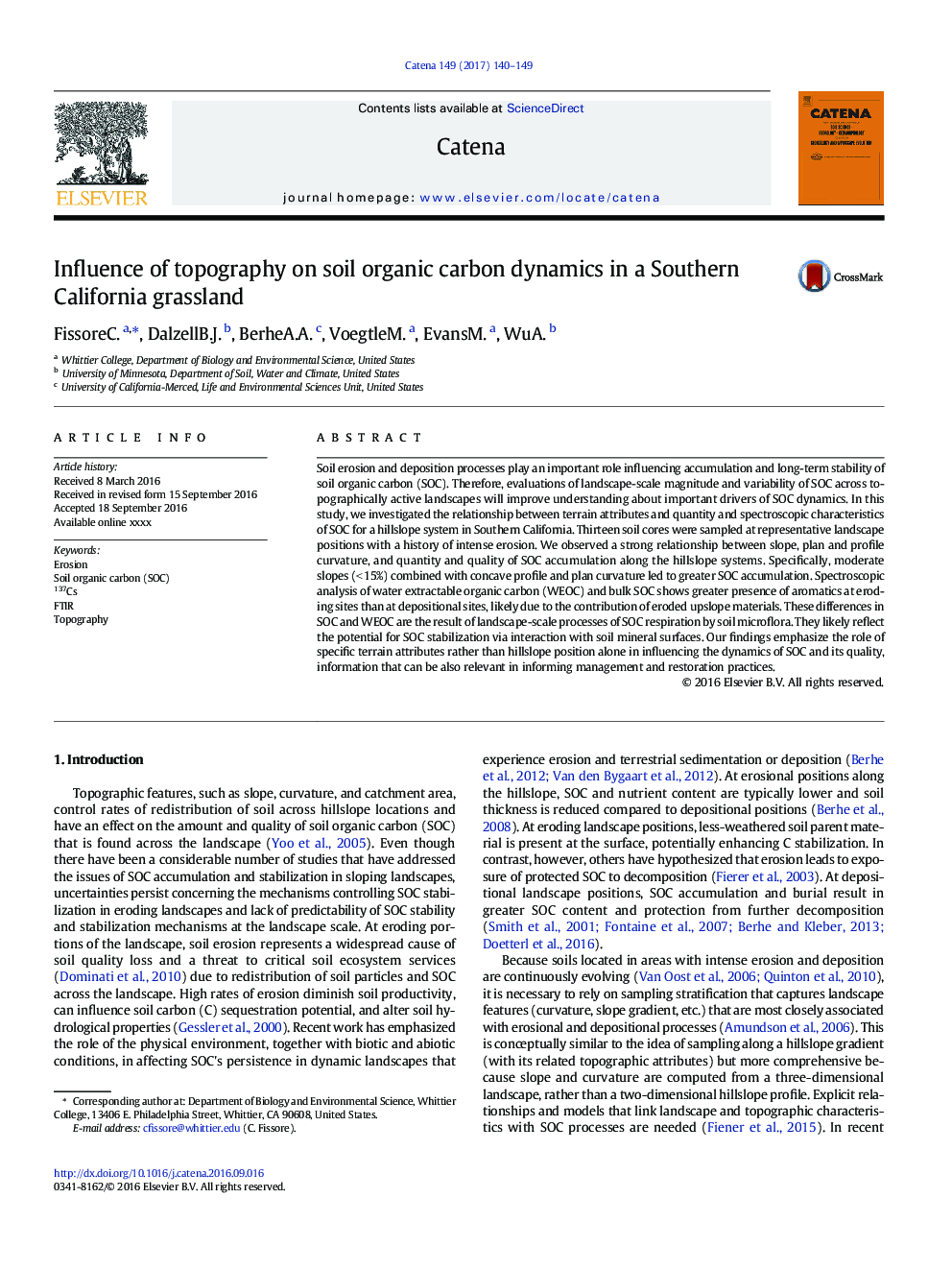| Article ID | Journal | Published Year | Pages | File Type |
|---|---|---|---|---|
| 4570855 | CATENA | 2017 | 10 Pages |
•Terrain attributes determine SOC distribution along the landscape.•Moderate slope and concave curvature favor SOC accumulation.•Lower SOC content, greater accumulation of aromatics at eroding sites
Soil erosion and deposition processes play an important role influencing accumulation and long-term stability of soil organic carbon (SOC). Therefore, evaluations of landscape-scale magnitude and variability of SOC across topographically active landscapes will improve understanding about important drivers of SOC dynamics. In this study, we investigated the relationship between terrain attributes and quantity and spectroscopic characteristics of SOC for a hillslope system in Southern California. Thirteen soil cores were sampled at representative landscape positions with a history of intense erosion. We observed a strong relationship between slope, plan and profile curvature, and quantity and quality of SOC accumulation along the hillslope systems. Specifically, moderate slopes (< 15%) combined with concave profile and plan curvature led to greater SOC accumulation. Spectroscopic analysis of water extractable organic carbon (WEOC) and bulk SOC shows greater presence of aromatics at eroding sites than at depositional sites, likely due to the contribution of eroded upslope materials. These differences in SOC and WEOC are the result of landscape-scale processes of SOC respiration by soil microflora. They likely reflect the potential for SOC stabilization via interaction with soil mineral surfaces. Our findings emphasize the role of specific terrain attributes rather than hillslope position alone in influencing the dynamics of SOC and its quality, information that can be also relevant in informing management and restoration practices.
